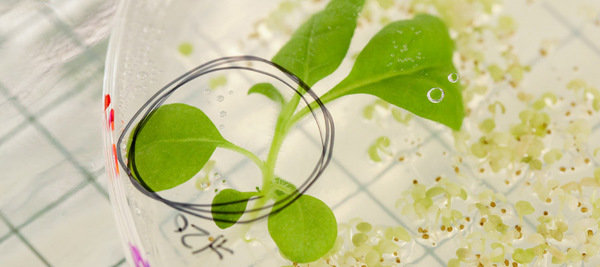
Publications of R. Sulpice
All genres
Journal Article (59)
1.
Journal Article
Multiple circadian clock outputs regulate diel turnover of carbon and nitrogen reserves. Plant, Cell and Environment 42 (2), pp. 549 - 573 (2019)
2.
Journal Article
Spatially resolved metabolic analysis reveals a central role for transcriptional control in carbon allocation to wood (vol 68, pg 3529, 2017). Journal of Experimental Botany 69 (16), pp. 4143 - 4144 (2018)
3.
Journal Article
Genome-Wide Association Mapping Reveals That Specific and Pleiotropic Regulatory Mechanisms Fine-Tune Central Metabolism and Growth in Arabidopsis. The Plant Cell 29 (10), pp. 2349 - 2373 (2017)
4.
Journal Article
Integrated analysis of rice transcriptomic and metabolomic responses to elevated night temperatures identifies sensitivity- and tolerance-related profiles. Plant, Cell and Environment 40 (1), pp. 121 - 137 (2017)
5.
Journal Article
Growth rate correlates negatively with protein turnover in Arabidopsis accessions. The Plant Journal 91 (3), pp. 416 - 429 (2017)
6.
Journal Article
Photosynthate Partitioning to Starch in Arabidopsis is Insensitive to Light Intensity but Sensitive to Photoperiod due to a Restriction on Growth in the Light in Short Photoperiods. Plant, Cell and Environment 40 (11-SI), pp. 2608 - 2627 (2017)
7.
Journal Article
Allelic differences in a vacuolar invertase affect Arabidopsis growth at early plant development. Journal of Experimental Botany 67 (14), pp. 4091 - 4103 (2016)
8.
Journal Article
Photoperiod-dependent changes in the phase of core clock transcripts and global transcriptional outputs at dawn and dusk in Arabidopsis. Plant, Cell and Environment 39 (9), pp. 1955 - 1981 (2016)
9.
Journal Article
Characterization of a recently evolved flavonol-phenylacyltransferase gene provides signatures of natural light selection in Brassicaceae. Nature Communications 7, 12399 (2016)
10.
Journal Article
Overexpression of Plastid Transketolase in Tobacco Results in a Thiamine Auxotrophic Phenotype. Plant Cell 27 (2), pp. 432 - 447 (2015)
11.
Journal Article
A long photoperiod relaxes energy management in Arabidopsis leaf six. Current Plant Biology 2, pp. 34 - 45 (2015)
12.
Journal Article
Defining the robust behaviour of the plant clock gene circuit with absolute RNA timeseries and open infrastructure. Open biology 5 (10), 150042 (2015)
13.
Journal Article
Quantifying Protein Synthesis and Degradation in Arabidopsis by Dynamic 13CO2 Labeling and Analysis of Enrichment in Individual Amino Acids in Their Free Pools and in Protein. Plant Physiology 168 (1), pp. 74 - 93 (2015)
14.
Journal Article
Variability of candidate genes, genetic structure and association with sugar accumulation and climacteric behavior in a broad germplasm collection of melon (Cucumis melo L.). BMC Genetics 16, 28 (2015)
15.
Journal Article
Disordered Cold Regulated15 Proteins Protect Chloroplast Membranes during Freezing through Binding and Folding, But Do Not Stabilize Chloroplast Enzymes in Vivo. Plant Physiology 166 (1), pp. 190 - 201 (2014)
16.
Journal Article
Metabolic efficiency underpins performance trade-offs in growth of Arabidopsis thaliana. Nature Communications 5, 3537 (2014)
17.
Journal Article
Dissecting the Subcellular Compartmentation of Proteins and Metabolites in Arabidopsis Leaves Using Non-aqueous Fractionation. Molecular and Cellular Proteomics 13 (9), pp. 2246 - 2259 (2014)
18.
Journal Article
Expression of sucrose transporter cDNAs specifically in companion cells enhances phloem loading and long-distance transport of sucrose but leads to an inhibition of growth and the perception of a phosphate limitation. Plant Physiology 165 (2), pp. 715 - 731 (2014)
19.
Journal Article
Analysis of Short-Term Metabolic Alterations in Arabidopsis Following Changes in the Prevailing Environmental Conditions. Molecular Plant 7 (5 - SI), pp. 893 - 911 (2014)
20.
Journal Article
Lipid Biosynthesis and Protein Concentration Respond Uniquely to Phosphate Supply during Leaf Development in Highly Phosphorus-Efficient Hakea prostrata. Plant Physiology 166 (4), pp. 1891 - 911 (2014)